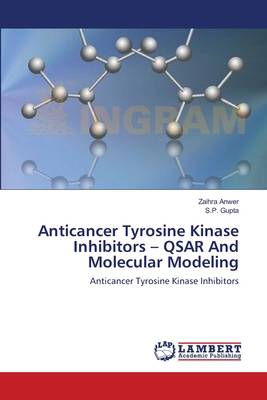
Je cadeautjes zeker op tijd in huis hebben voor de feestdagen? Kom langs in onze winkels en vind het perfecte geschenk!
- Afhalen na 1 uur in een winkel met voorraad
- Gratis thuislevering in België vanaf € 30
- Ruim aanbod met 7 miljoen producten
Je cadeautjes zeker op tijd in huis hebben voor de feestdagen? Kom langs in onze winkels en vind het perfecte geschenk!
- Afhalen na 1 uur in een winkel met voorraad
- Gratis thuislevering in België vanaf € 30
- Ruim aanbod met 7 miljoen producten
Zoeken
Anticancer Tyrosine Kinase Inhibitors - QSAR And Molecular Modeling
Anticancer Tyrosine Kinase Inhibitors
Zaihra Anwer, S. P. Gupta
Paperback | Engels
€ 57,95
+ 115 punten
Omschrijving
This book is divided into 5 Chapters in which Chapter 1 contains introduction on anticancer tyrosine kinase inhibitors, Chapter 2 contains an overview of drug design and quantitative structure-activity relationship, Chapter 3 contains literature review, Chapter 4 contains plan of work and methodology and finally Chapter 5 contains work done and discusses in detail the results obtained. A quantitative structure-activity relationship (QSAR) study has been made on some series of anticancer tyrosine kinase inhibitors, namely, a series of aminopropyl tetrahydroindole-based indolin-2-ones, a series of pyrrole derivatives, a series of 4-alkynyl and 4-alkenylquinazolines, and a series of N-4,6-pyrimidine-N-alkyl-N -phenyl ureas. In each series, significant correlations are found between the inhibition potencies of specific tyrosine kinases and some physicochemical and steric properties of the compounds explained by different regression equations. Docking study was also performed on assumed compounds of one of the series to find the compound having best interaction with the receptor.
Specificaties
Betrokkenen
- Auteur(s):
- Uitgeverij:
Inhoud
- Aantal bladzijden:
- 100
- Taal:
- Engels
Eigenschappen
- Productcode (EAN):
- 9783659118661
- Verschijningsdatum:
- 5/05/2012
- Uitvoering:
- Paperback
- Afmetingen:
- 152 mm x 220 mm
- Gewicht:
- 159 g

Alleen bij Standaard Boekhandel
+ 115 punten op je klantenkaart van Standaard Boekhandel
Beoordelingen
We publiceren alleen reviews die voldoen aan de voorwaarden voor reviews. Bekijk onze voorwaarden voor reviews.









